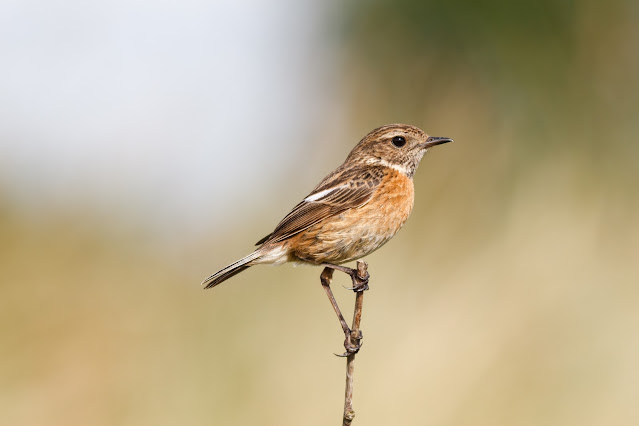Several strokes of luck led to a full-fat patch tick today - Pallas's leaf warbler
Firstly - I decided to take today off work today instead of next Friday
Secondly - When news broke of a Radde's Warbler at Newbiggin-by-the-Sea and Wood lark at Newton, I stuck to my plan and birded the patch
Thirdly - I bumped into Darren Woodhead and his son Corin.
I set out, as planned, to bird the patch, I was there for 7.40 and it was just light but foggy. I followed my usual plan of attack, to work the bushes by the entrance and the plantation before heading north.
Not long out of the car, I got onto a classic Siberian (tristis) chiff, grey above, green in the wings and off-white below, not warm at all. And it called a thin 'toot'.
Two birders, that I'd not seen before, arrived shortly after me and started birding the plantation. They also had a sibe, when I went into the plantation, it also called - 'toot' - two birds (?). They were on a yellow-browed warbler. Darren and Corin Woodhead from Lothian. I recognised Darren - and now I know from where - I've often admired his artwork on my annual trips to Birdfair.
 |
| record shot of Yellow-browed warbler |
 |
| Yellow-browed warbler |
I spent the next hour or so in the plantation with repeated views of the yellow-browed, lots of crests, robins, wrens and a steady trickle of skylarks overhead and a group of c25 siskin south. Four brambling dropped in and fed for a while.
 |
| Brambling |
Back at the 'entrance bushes' I was watching a yellow-browed when a second bird called from the sycamore at the plantation- two. Redwings came in overhead. News broke of a Radde's warbler at Newbiggin - I ignored it.
I moved up to the middle plantation, where Darren and Corin were scouring the trees. I joined them, Darren and I were looking through the pines and sycamores, but Corin was watching the scattered scrub to the north and exclaimed suddenly 'Pallas's'!
 |
| mega-cropped record shot of Pallas's leaf warbler in flight - 6400 ISO |
We got straight onto it - a Siberian gem, flitting around a crab apple tree. A patch tick for me and a great find for Corin. We enjoyed the bird for a good while before it flitted off. ADMc and others joined us, Whilst scouring the goldcrests for the Pallas's, I got briefly onto a firecrest, thankfully it showed on and off for the next 30 minutes, as did the the Pallas's. Another yellow-browed warbler was calling in the bushes to the north.
Further north I found another firecrest in a small flock of crests and tits behind the Budge hide.
Up at the path to the hides, by the timber screen, a 'bird wave' passed through with a long-tailed tit flock. There were at least five chiffchaffs around that area. This one has me stumped though - not a classic Sibe, I thought, too 'warm' but also too brown for a bog standard collybita. I know that Sibe's can be variable though and light plays a huge part. It didn't call. Not sure on this one...
 |
| 'brown' chiff |
 |
| same bird |
 |
| 'Bog-standard Chiff' |
I heard a lapland bunting calling, it passed overhead behind three skylarks, all going south. A flock of about 18 lesser redpoll fed in the alders and I found a few more siskin further north before I headed home.
 |
| lots of these miserable-looking birds |
 |
and these
|
 |
| a few of these |
This afternoon, I acquiesced and went to the Ash Lagoon Banks at Newbiggin to look for the Radde's. No luck there, although others claimed it, but a roosting long-eared owl was worth the trip and new for the5km2 patch.
I'll be back out again tomorrow.















































